#if only because the idea of such religion being present in a world full of magic is fascinating
Explore tagged Tumblr posts
Text
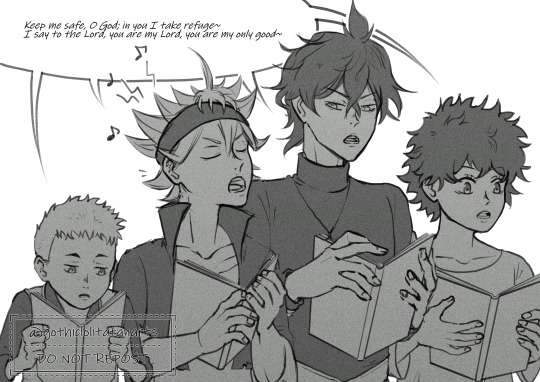

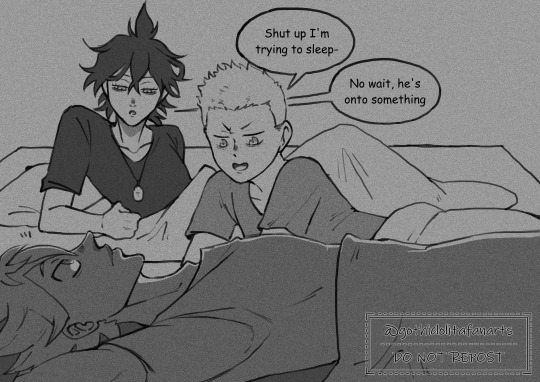
Asta literally grew up in a church and only got like C- in being a catholic. After contracting Liebe tho he got a straight up F.
#black clover#asta#yuno#nash#recca#i wish we got to see a bit more of how the church functions in the series#if only because the idea of such religion being present in a world full of magic is fascinating#how are you worshipping jesus?#hes not even that special#literally everyone an perform MIRACLES with their magic spells#tabata get back here and explain to me how you think christianity works in this setting
732 notes
·
View notes
Text
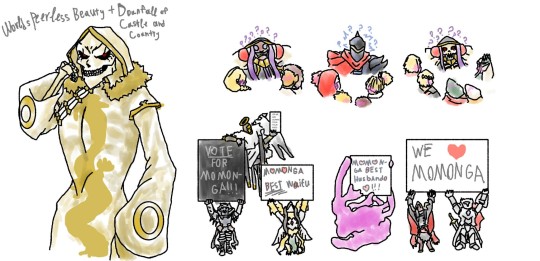
I call this the Worlds Peerless Beauty AU
It all started because the developers of YGRASILL decide "let's have a beauty contest!" In which players voted for who they think is either the most attractive or beautiful player avatar
Ainz Ooal Gown to not be undone come together and start to brainstorm who to put
At first they think of Bukubukushagama because she has the voice , then they wake up and remember that most people wouldn't find a pink slime attractive
The they go through the other fem presenting members and well ...
Yamaiko looks like she will pummel someone to the ground
And the less said about Ankoro Mocchi Mochi the better
Then Peroroncino has the bright idea to put Momo-can , because everyone loves him
To Momonga dismay everyone else in the guild agrees , so majority vote
And so Ainz Ooal Gown goes head first and full steam into putting Momonga out there
By the time the voting came almost everyone knew that Momonga the adorable skeleton is more than just the guild leader of Ainz Ooal Gown
And say what you will about YGRASILL player being Heteromorphphobic but even they can agree that a skeleton getting the title of Worlds Peerless Beauty would be hilarious
And so in parts doo to players :
- actually falling for Momonga
- being a monster fucker
- being a troll
- being the only contestants most people recognize
Momonga got the title in a rather big majority vote (the second place had close to 3x less votes)
The title allows for a rare class called Peerless Beauty that's kinda overpowered , and because they are Ainz Ooal Gown they start to abuse it (the fact it allows Momonga to charm even otherwise not possible character is a BIG bonus)
But times goes on
And then we get the start of the story
Except now you have Ainz not only as the undisputed ruler of Nazarick but also as the undisputedly most beautiful thing there is
Because the Carne Village situation ? He got the villagers blushing , the enemy attackers blushing , Gazef blushing , Gazef's men blushing and the Sunlight Scripture blushing . And they all are blushing like it's a sport . His mere presence makes people questioning either their sexuality, morality or sense of beauty
Being Momon (with the armor and it's dampening effect) only somewhat negates that , more specifically it just makes it so people need to either look closer or be around him more to get the same effect . Remember the scout dude that made a rude comment about Ainz's aperance ? Yeah here he says that Nabe is beautiful in a cold , exotic and unique to see way , while Momon has a warm everyday type of beauty that slowly but steadily grows on you . And Evil Eye is even more lovesick that canon
Ad the moment the mask comes of is when people are hit the hardest :
Jirchiv is even more convinced that Ainz is GOD (he is probably gonna convert soon)(he is also one of the only people NOT having a sexuality crisis because he knows what he is , that being sapiosexual)
Neia is even more sure Ainz is GOD and acts as such (the religion is spreading even quicker)(Neia is also one of the only other people who aren't having a sexuality crisis over Ainz ,because she had her's from Shizu)
The Elf King wants to make babies (and is getting his ass beat)(power hungry madman what can you do ?)
Rener is having a breakdown because she thought she only liked Climb that way and is having a sexuality crisis
Climb is going through a sexuality crisis of his own because he thought he only had feelings for Rener
Zaryusu and Crusch are not only also in a sexuality crisis but are also contemplating opening their marriage to also include Lord Ainz if he so wishes
Brain is having his second biggest sexuality crisis (the first was from Gazef , so he knew he liked powerful men what he just didn't know was that he liked powerful men even and if they are skeletons)
Filip (being an idiot) thought that Ainz had a crush on him and decided to do all that (for some no name noble) . Filip decide he quite likes both him and Albedo and wouldn't mind having her as their shared mistress (he is getting send to Neuronist for the blasphemy he committed)
Remedios thinks Ainz is even extra evil because he is that beautiful
Zanac is like "I talked to GOD , and he is a really cool and down to earth guy" , granted he died but still got the respect of both the world strongest and most beautiful person and in just one conversation
Platinum Dragon Lord is contemplating kidnapping Ainz(and maybe taking him as his bride) and keeping him in his castles like he is a dragon from a fairy tale (dragons kind inborn skill to be able to judge how much something cost are going overdrive trying to calculate how beautiful Ainz is)
One of the fun parts in this is that people who wouldn't be attracted to him sexuality won't be attracted they just see him as someone extremely beautiful , and if someone argues let me ask you . Do you get horny while watching a sunset ?
65 notes
·
View notes
Note
ur part of the reason I just played OFF and after finishing it, I thought you might have an interesting opinion of the game's narrative. I guess I'm asking to hear it or any other thoughts you have about it?
oh boy !! my favorite fun game for cute children !!!! this will be a long post but i have tried my best to condense everything as much as possible. i will say this is a wild, images connected by string on a corkboard type analysis but hey, thats what makes it fun !
so what do i think is the story being told here ? (under the cut)

off is such an interesting game to me, because of the mystery surrounding its story. theres no clear answer, mortis ghost himself has said the game itself is up to interpretation. however there are many many theories some deep some not, and at the end of the day it may just be a game meant to be vague and weird and thats it ! but this is the theory i think fits the best from my experience playing the game.
one thing that i believe is pretty straightforward about the story is the allegory for the effects of extreme illness and its effects on the lives of people, specifically our most important character- Hugo, the sickly child who we know as the creator of the world of off (which includes the queen and the batter himself)
I will get this out of the way now, i think the overall theme of off deals with the idea of eugenics as well as religion.
we know that hugo created this world, we know he is extremely ill, we know he is lonely and most likely using the creation of the zones as a coping mechanism to escape his reality. we can see that hugos mother is most likely his primary guardian but is not often around (as the queen has duties to attend to) and his father is not present up until the start of the game- meaning he has just only now started to have relevance in hugo’s life.
now where does religion come in ? its simple, the batter is here to purify the world (the world=hugo) and he will do do by force. with this we can assume that hugo’s real life father is a religious man, even further with the idea of the three rings, three zones, etc being a reference to the holy trinity.
so back to hugo, i believe he is a sick child, terminally ill. his mother might be working all the time to cover the medical bills and his father, a religious man refused to take care of a child who is destined to die. perhaps at the start of game hugo is quite literally on his deathbed, being kept alive by machines and pumped full of medication, causing his father to have to come into the picture for them to make a choice: pull the plug (or switch the world “off”) and let hugo rest, or continue to keep him alive.
i will also agree with the idea that each of the guardians of the zones represent some level of illness or disability as well, but i will not go into tje specifics of each as this is already going to be a long post.
anyways back to the batter. he needs to rid the world of “imperfections” (catch the implication ?) and bring about an era of holiness. i believe hugo’s father did not want him as the parents knew hugo was going to be born ill, and that is why he left. God damned his soul and hugo’s father believes that hugo is in some way paying for his sins. the mother has the child, wanting to give him a chance to survive, but now hugo is reaching the end of his life. his father wants to pull the plug, to rid the world of his “impure” son, the mother wants to keep him alive and give him a chance- but most likely for selfish purposes as i believe hugo’s brain is mostly gone already, what’s left is his mind’s attempt to cope with the pain by creating this world.
the elsen are also extremely sickly, working to death mindlessly, so while i am mostly talking about the story in relation to hugo himself, it can also be assumed that perhaps some type of epidemic is going on on a larger scale. of we consider that and branch out our view, we can see this:
there are people who are sick, and there are people who are using religion to push an idea of eradicating them. some may say this is an allegory for a genocide of sorts.
but back to the small scale with hugo. what is it that caused him to be sickly ? i believe he was born this way yes but with his environment it worsened. now we get into the elements in the world of off. smoke could be the reason for his terrible cough. ive seen people say metal could refer to the chrome sterile hard surfaces of a hospital. plastic which associates the toys we see him playing with as a distraction. and meat os essential to him to keep on living. with these things in mind i also assume that perhaps while born ill hugo’s condition is worsened by living in poverty- specifically in reference to the meat- as it flows thruout the world of off in abundance, the importance of being able to access food being something very important to hugo.
and then theres the secret element: sugar.
sugar to me is representative of drugs, medical or otherwise. the sugar is there to lessen the pain of living and is extremely addictive. these drugs could be im reference to the use of substances to escape the horrid reality of poverty by the working class as well as the medication being used to keep hugo alive in the hospital, or at the very least suppressing his symptoms.
so what is it i think off is about ? i believe off is a sickly child’s perception of illness in both himself and his community, worsened by the effects of poverty amidst a complicated relationship with his parents. his mother is active but neglectful, his father wants him dead, they are fighting bacl and forth on the decision of hugo’s life. on a larger scale i feel it has to do with how religion is often a big element of eugenics and the idea of a “pure” human being, and that is often a stance taken to defend mass destruction such as genocide, and hugo happens to be a victim of that.
now this could all be the ramblings of something that has no deep meaning by a person who likes to think too hard about media, as i said none of this is really confirmed, but out of all the theories ive read and playing the game myself this is the story i assign to off, and the complexities of it is why this is my absolute favorite game !
#ask#off the game#off#off zacharie#off game#off mortis ghost#mortis ghost#rpg#horror#horror game#off theory#theory#the batter
50 notes
·
View notes
Text
It's my birthday so first post related to Castlevania nocturne season 2 related with my expected babygirl drolta so spoilers down below
THE WRATH OF DROLTA TZUENTES
"For every suffering, there's wisdom" - Drolta
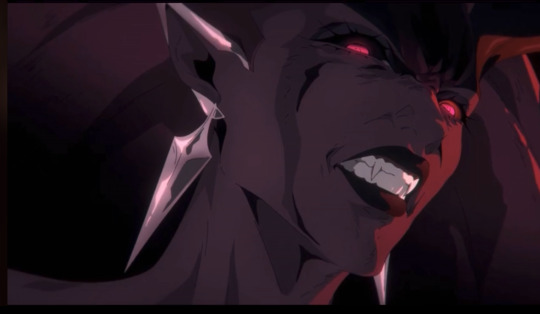
And since I'm a hooker for bad women it was so damn pleasant to see that her first move when entering the series was announcing her fake religion under the vampire messiah and killing mercilessly a bunch of men
Ever since i laid eyes on her on s1 i knew she was going to be trouble
Occasionally making some jokes there and there, being suspicious of Olrox ever since the start, her presence was undeniable and it would always make me in the edge of my seat of how unpredictable she was
Even if Erzsebet was supposed to be the big bad she lacked what Drolta had
Presentation and unpredictability
With the full context of her backstory in s2 i now know that all she really wanted was to revive sekkemet, in exchange for her "salvation"
She had a rough upbringing just like everyone else, having to watch her people being killed when she was human
Feeling weak for not being able to protect anyone
Pleading for a sign from her godness
She got one, but she misinterpreted it completely
Instead of keep the healing aspect of Sekkemet she took in the war part of her and ran with it, making herself a vampire and spending centuries manipulating, scheming and destroying for a single goal
I literally cheered at my seat when that scene happened
And that all that erzsebet was to her a means to an end, she filled her with promises of grandness, worshipping and adoration by all, but all that she saw was a vessel 'worthy enough' to carry the violent side of the goodness without burning into ash, and as soon as she was losing near the end of s2 Drolta saw no need for her anymore and claimed that power to herself
That's how drolta saw everything and everyone after what happened to her
A means to an end
While i was primarily dissapointed at the idea of her taking a backseat as Erzsebet was the main bad on s1, it was brilliant that she played not only her but the entire audience to think she was not a bigger threat for being a pawn, when every sign was laid that yes she was the big deal, and rentless in her pursuit, unchangeable
Erzsebet loved Drolta and when she got killed by alucard at the end of s1, she was desperate to bring her "most faithful servant" back
But Drolta didn't shared the same sentiment, though she was really good in hiding it, because yes, she was devoted, but to herself and to her cause
Girl was calculating, every sentence of hers carefully spoken made her terrifyingly sweet and ironic
And i loved it
It felt extremely cathartic the way she broke down when realized Sekkemet (possessing Annette) hated her for what she had done
"i thought this is what YOU wanted" - Drolta
It was brutal
Brutal because she realized that all he did to serve her was for nothing, that she fucked up reaaaal bad and there was no turning back anymore
It was instant karma for betraying Erzsebet a few minutes prior, for all the lives she took
For all the pain she caused in the name of the goddess she believed
And the way she died, by the "boy who run away" Richter splitting her in half with Alucard's sword and his powerful eyes being the last thing she saw
Absolute cinema ✋✋
I loved Drolta exactly by the fact she was a cautionary tale kind of villain, and irredeemable
She would never change nor love, being the definition of the vampire's virtue that she thoughtfully embraced in a religious fanatism that would engulf her for centuries because she believed she'd be rewarded by the godness she thought that cared
She was vile, bloodthirsty and craved nothing more than plunge the world into eternal chaos in the name of her godness
A satisfying villain for a satisfying series
#bunbunscreams#drolta tzuentes#castlevania nocturne#castlevania season 2#Castlevania season 2 spoilers
18 notes
·
View notes
Note
i was trying to explain to my mom how the harry potter game is antisemitic (we are not jewish) and she didnt really seem to get it. she was like "i mean if they were wearing yarmulkes i would be like yeah, the goblins are supposed to be jewish". do you know of a good source that i could send her that would break down the jewish stereotypes and how they arent just coincidence? if you dont have a good source dont worry about it but i saw you reblog stuff about it so i thought you might. thank you for your time!
I have a few resources I'm linking in my reply here, but I'm probably not going to be answering other questions about this because, to be honest, as a Jewish person in fandom, it's stressful. I'm reblogging stuff about Hogwarts Legacy because I'm Jewish and the antisemitism in the game is vile to the point where it feels irresponsible for me not to address it in some way, and because it ties into a lot of the other antisemitism I've personally faced in fandom when speaking about anything Jewish. I feel like your mother may have some trouble grasping the antisemitism because she seems to be viewing Judaism solely as a faith, when Judaism is an ethnoreligion -- a religion, an ethnic group, and wide and varied culture, and so stereotypes about Jewish people don't have to involve religious symbols and very often involve specific physical features, ie, big noses. The goblins in Harry Potter are short, ugly, and they have huge noses -- these are all features commonly associated in antisemitic caricature with Ashkenazi Jewish men. The idea that the goblins would only be valid caricatures of Jewish people if they were wearing a specific piece of clothing is troubling because it invokes the yellow stars Jews were made to wear by the Nazis. (For the record, my uncle wears a yarmulke full time, but the other men on my mother's side of the family do not. This does not make them less Jewish.)
But if your mother needs a symbol associated with the Jewish faith to help her understand, it's been noted that the game features a "goblin horn" that is very clearly a shofar, an important piece of Judaica which is used for religious purposes. (There's also a link between the date the horn is given in the game and a very brutal pogrom; more info in the twitter thread linked. If you want to get an idea of how virulent antisemitism is in fandom, the response to this thread and others like it are A Lot.) Like I can't say enough how blatant this is, and the reason it's getting by so many people are 1) a lot of non-Jewish people are at least on a base level, if not actively antisemitic themselves, basically okay with antisemitism, because antisemitism is so present in our culture and 2) uneducated on Jewish matters.
It's also important to note that in the Harry Potter world, goblins are specifically bankers. This is how they are first introduced to readers and this is their primary association in world: the goblins are literally guarding the gates on huge piles of wizard gold. This is an antisemitic stereotype, as Jews are often perceived as being money grubbing and greedy, as well as "secretly controlling" the greater world's wealth. More info in this wikipedia article: https://en.wikipedia.org/wiki/Economic_antisemitism. This thread by Rabbi Danya Ruttenberg also breaks down the connection between the "greedy Jew" stereotype and the historical precedent for Jewish moneylenders, a profession that was foisted on them because it was distasteful to Christians: https://twitter.com/TheRaDR/status/1057333224538624001. Harry Potter is not unique in these depictions. There is an example of this in, say, Star Trek, where the Ferengi are a race of greedy, money-obsessed aliens who have exaggerated "ugly" features and who are often depicted as oversexed, especially when it comes to women of other, more classically attractive alien races (this is another antisemitic stereotype of Jewish men). But the Ferengi are also all played by Jewish actors, and in the show where they feature most, Deep Space 9, they're protagonists. So while the Ferengi are rooted in antisemitic stereotypes, the involvement of Jewish creatives and their role in the story makes it a more complicated, nuanced situation. This is not what is happening in Hogwarts Legacy.
It's not a coincidence that the goblins in Harry Potter have always been depicted as bankers right from book one. While you can theoretically separate the series from Rowling's transphobia (although, y'know, you shouldn't), the antisemitism is baked into the series. Hogwarts Legacy just takes it to a whole other incredibly overt level. The point of the game is violence against Jews, and we see that because it's revealing just how many people out there are fine with demonizing Jews specifically and the level of violence Jewish people often face in fandom when they speak out about antisemitism.
561 notes
·
View notes
Text
Ateez's Full Storyline Explained - Part 8
Masterlist
Fever Epilogue Diary Entries:

The Intro consists of a news report detailing the theft of a Mayan relic from an exhibition at the National Museum of Korea
The trio of thieves were arrested mid-heist and when questioned by a reporter, one of them stated:
"I had to steal the relic to save humanity before they face the world's end."
They were also identified as believers of the religion named 'Sciensalvar' which was established by scientist Henry Jo in 1999 who used it to spread his beliefs about (1) humans being made up of energy, (2) his faith that all uncertainties about the future can be resolved with science, and (3) the energy condensed inside the Mayan relic (which is shaped like an hourglass) will be the key to saving humanity
It's at this point that the parallels between 'Sciensalvar' and the Central Government in the Z-World become evident
I'd also like to note that the name "Sciensalvar" is likely just a combination of "Scien" from "science" and "salvar" which is Spanish for "to save, to rescue" - saved by science
The Mayan relic Henry Jo mentioned is an hourglass artifact that imitates the moon's movement.
Experts have long speculated about the artifacts purpose but the common theory is that it was "crafted through an uncommon metallurgy technique" and used for "ceremonial purposes"

Ateez, now back in their own world, find themselves back in time to before Yunho's brother's accident which they presume to be a side-effect from smashing the Cromer
Yunho is, of course, thrilled by this because he's been handed a chance to save his brother but San feels conflicted
From San's entry:
I can understand Yunho, but deep down in my heart, I felt bitter against him. Whether we are in the past or present, one thing was clear. We may be alive, but Yeosang isn't here with us.
With the Cromer broken, San doesn't see a way for them to go back and safe him
Just then, Seonghwa rushed toward them with a shouted "This is the Cromer, right?"
He's holding the article from the Intro about the museum heist
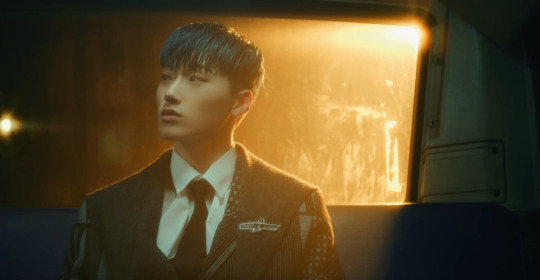
Hongjoong is quick to draw the conclusions that the Cromer Yeosang just broke was from the other world so it's quite possible this world has its own version which would allow them to bring back Yeosang; they could just put it back in the museum after
The other members are immediately against Hongjoong's idea because of how dangerous and illegal it is
From Seonghwa's entry, we hear Hongjoong's reply:
"Whether it is legal or illegal, what about Yeosang? You are telling me that you want us to leave him there?"
Seonghwa admits to himself that he would've protested too in the past but now:
I'm not the person who I used to be. Saving Yeosang is my top priority. "We decided not be stuck in the past. When we left to another dimension, we all made up our minds, didn't we?"
Since they're sure they traveled back in time, they've been given the chance to make things right so, one by one, the other members agree to Hongjoong's plan
As everyone was coming together, Yunho quietly said, "I want to stay here. I can't leave my brother."
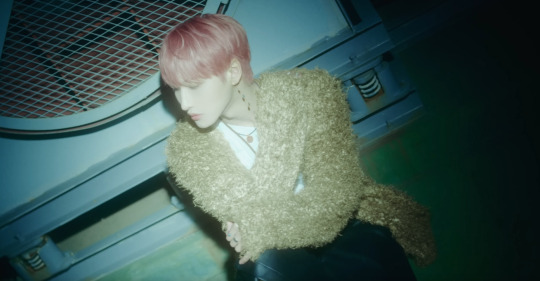
Shocked by Yunho's words, Jongho and Mingi distance themselves from the rest
From Jongho's entry:
"I respect Yunho's decision." I looked at Mingi, perplexed. He carefully went on. "When I thought that I may lose my grandmother, everything felt meaningless, even my dreams and our members. I believe it will be even worse for Yunho. He already lost his brother once. He'd never want to let him go." At that moment, I remembered when I punched Mingi. When Mingi told us he wanted to quit, saying that our dreams are meaningless, I felt betrayed and swung my fist. Obviously, my heart was instantly flooded with regret.
Mingi then, for the first time, shared his side of the story: his grandmother was the only family he had left, so when he thought he might lose her, he couldn't bear the thought of having fun with the members while her condition was worsening
It's then that Jongho finally understands where Mingi had been coming from back then and comes to the conclusion that Yunho must have it rough as well - torn between wanting to save Yeosang and his brother
They discussed things with the other members and decided to still go through with the plan; this time as six
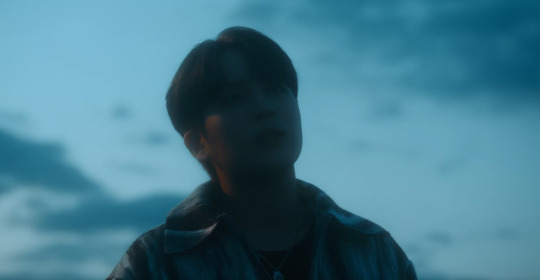
Despite being back home with his brother, Yunho is nervous but hopeful that everything's going as planned
He keeps checking his phone every few minutes for which his brother scolds him
From Yunho's entry:
"You are so weird! You've changed so much! Well, I like it a lot better than when you were wandering around on your motorcycle... But I still can't get used to this sudden change in the last two weeks."
Yunho proceeds to switch the topic to the state of his brother's legs - his right has been dysfunctional since birth so his left tended to swell up a lot
Yunho massaged the left for him while he joked it must be what he traded for his musical skills to which his brother laughed
His brother calls it a blessing in disguise and switches on the TV just as the news came on
The report was about Henry Jo who'd just stormed the museum with 100 followers
Some boys who were trying to stop them from stealing the relic, are now being held as hostages. I jumped up. The hostages were my members. I took out my motorcycle key from the cabinet and yelled at my brother, "Stay inside. You should stay inside no matter what!"

From Wooyoung's entry:
Thought Sciensalvar was a religious group. But why... Why is Henry Jo pointing his knife at my throat? How did this happen?
The plan had been to show up at the museum at 4pm and enter the museum in two groups of three - one to distract the security guards which tend to loosen up at this point, and one to steal the Cromer before they got out of there and switched to the Z-World to get Yeosang
However, they didn't even get into the building before things derailed
A group of red-clad people entered the exhibition hall; they were gathered around one lone figure in black techwear holding the Cromer
It was in that moment that some high school girls with red blankets passed Wooyoung who snatched one of the blanket and covered himself, leaving the girls with embarrassed expressions behind
The five other members also proceeded to join the red-covered mass, but just before they reached Henry Jo, the police fired a blank and surrounded the group
At that moment, I reached towards the Cromer... But Henry Jo pointed a blade at my throat even more quickly. He whispered in my ear, holding back his laughter. "I just needed a hostage, so thank you for coming!"
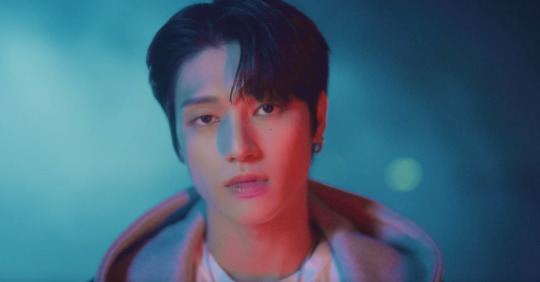
From Hongjoong's entry:
'Think Hongjoong. Think!' My head blacked out. My head stopped because of this fear I've never felt before. Bang! The police shot another blank fire shot. As the final warning, the police yelled that if the hostages were not released, they would fire shots immediately.
Henry Jo orders his followers to not be swayed, no matter what
Just then, a group of six bikers races toward the museum and begins to circle the Sciensalvar followers who are visibly getting nervous
The noise from the bikes drowns out Henry Jo's instructions
Hongjoong's gaze catch sight of a familiar sticker on one of the bikes: "ATEEZ YH" - these are Yunho and his friends
I intuitively knew Yunho's plan. As Henry Jo lost control over his believers, he turned towards the crowd. "Wooyoung!!!" I wasn't sure if Wooyoung heard me, or if he intuitively knew it was Yunho, but Wooyoung snatched the Cromer and started to run.
The moment they split from the crowd, the motorcycles pull up and give them a chance to hop on before ramping up to put some distance between them and the museum
When Hongjoong looks back, he finds Henry Jo also splitting from his followers while the police were distracted by the chaos
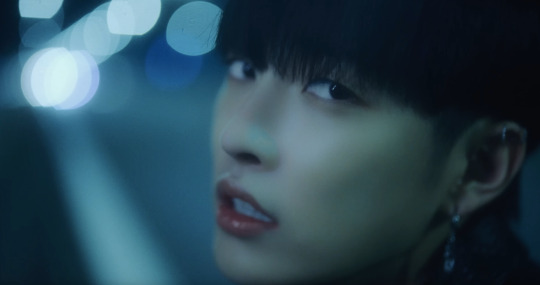
From Mingi's entry:
"Ah, I knew you'd come back!" I shouted with excitement behind Yunho. As I was shouting with joy, I heard Hongjoong saying, "There's a car behind you!!"
The six motorcycles swerve hard to dodge the oncoming car, resulting in each of them crashing to the ground while the car rushes past and runs over the pedestrians on the sidewalk
Yunho trembles as he catches sight of who got hit
"Brother!" Yunho screamed as he ran to the pedestrian. It was Yunho's brother on the ground. He seemed like he was heading towards the museum after seeing Yunho's motorcycle on the news. Yunho's brother slowly opened his eyes and asked: "Is it 5:07 right now?" I checked my phone and it was 5:07 PM. "Your diary said that I got hit by a car at 5:07 PM." Yunho looked at his brother, startled. His brother went on, saying: "Sorry. I read your journal on the desk. I knew something was going on, but you never told me what you're going through." He painfully continued breathing. "It didn't make any sense, so I thought it was a lie. I guess it wasn't." "We need to go to the hospital right now." Yunho wiped his tears and tried to pull his brother, but his brother grabbed his arm. Yunho held on to his brother's hand as if he'd never let him go. "There's something I need to tell you... It wasn't your fault that I got injured back then, and even now, it isn't your fault. So leave me in the past and move on with your own life." Yunho was weeping. His brother slowly patted Yunho's head. "I love you, my brother. You know what I always say, right? You're doing your best just by going through the day. I was happy enough for the last two weeks. I appreciate it." Then, Yunho's brother passed out. Yunho put his head down on his brother's chest and wailed.
Henry Jo stumbles out of the flipped over car, blood dripping from a head injury as his gaze zeroes in on the Cromer in Wooyoung's hand
He pulls out a knife and rushes toward him but get interrupted when Yunho's fist sends him flying with an accompanied shout of "Turn the Cromer!"
Henry Jo picks his knife back up and climbs to his feet but just before he can reach them, Wooyoung turns the Cromer
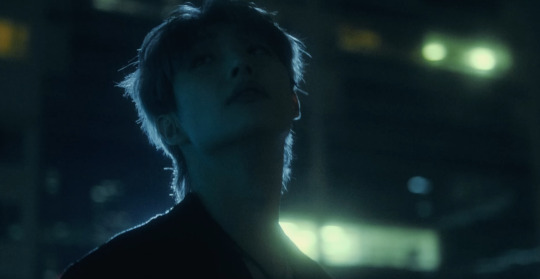
From Yeosang's entry:
How long have I been in this glass room? It felt like an eternity being in this tube without any light.
All Yeosang has to look at are the resistance fighters covered by a black sheet with their biological energy stolen; among them, the Grimes siblings (their deaths are later fully confirmed in The World Ep Fin Diary Entries)
Left Eye and the siblings had been alerted by the bright light the Cromer emitted when it shattered but only Left Eye managed to escape the bunker, though even he lost his right arm in the process
I don't know how much time has passed. The pain was so great that I desired to lose my emotions instead. I wished that the Guardians would just kill me.
Just when his thoughts got that desperate, trumpets can be heard from outside
The Android Guardians rush outside and an audible fight breaks out
Yeosang begins to beat against the glass tube
"Somebody please get me out of here! Please!" The light that I hadn't seen for ages slid in when the door opened. Men in black fedoras were fighting with Android Guardians behind the opened door. "Hey, Yeosang." I heard a warm voice calling my name. A guy came near my glass room and pulled down his black mask. Tears of relief burst out of my eyes. It was Seonghwa.

Back in the Black Pirates' underground hideout, Left Eye, missing one arm and seeming more fragile under the weight of another loss, receives a morse code transmission
Left Eye interpreted the Morse Code he wrote down. The light of hope spread on his face gradually. Left Eye turned to the people and shouted: "They're back! They came back!!" The cheers of 'Black Pirate' echoed in the underground hideout. The messy handwriting of Left Eye on the paper reads: "SAY MY NAME. ATEEZ."
Side-note: this is also a callback to Hongjoong's diary entry from the Fever Part 1 Diary Entries
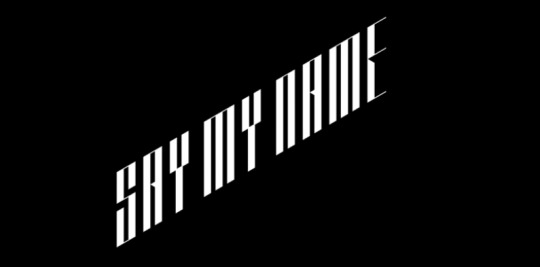
#ateez#ateez lore#hongjoong#seonghwa#yunho#yeosang#san#mingi#wooyoung#jongho#fever epilogue#fever series
51 notes
·
View notes
Text
You know what?
I just figured something out and I'm sure other people figured it out a long time before me but I have a lot to say so here we go.
Set-up:
Idea 1: So awhile back there was an absolutely fantastic post on here about how Christianity attempts to market itself as "modular" - that you can totally keep being whatever culture you are, but just swap out your current religion for Christianity and go! The post was about how this is complete nonsense, because in most cultures, religion is part of the culture, and the two are not separate concepts from each other.
Idea 2: I have repeatedly said that I find the concept of gender abolition (particularly how radfems discuss it) to be unpalatable, and one of the main reasons is that I look around the world and see how beautiful gender expression and gender performance can be, and I find the idea of eradicating all of that to be quite dystopian. I use the term gender liberation, not abolition.
Synthesis:
Gender identity and gender expression are not modular, and in fact are integral parts of culture, and can't be separated from culture. Your gender identity is part of your cultural identity.
The way I am nonbinary and butch and transmasc and becoming Jewish is not the same way a Burmese person (for a random example) would be nonbinary and butch and transmasc. They may not use the same words! They may conceive of their gender identity in a completely different way from me and how they move through the world is going to be totally different. The ways they express genderqueerness is going to be totally different from how I do it.
And that's beautiful.
And I think this is how I come full circle in my ability to articulate my disgust with radfems who want to not only eradicate gender, but who want to eradicate entire cultures and religions in their twisted vision of "female liberation". Not only are they pro-cultural genocide, they're pro-erasure of identity.
I think about cultural diversity, the beauty and freedom of personal expression, the joy of presenting in a way that not only connects you to your gender identity, but to your people and your community. Feeling at home in your body and your community in a way that brings you pride, gender expression as a form of cultural celebration...
And radfems want to kill that.
95 notes
·
View notes
Text
Starfinder Character Concept: A Luminous Skeletal Priest
Okay. So. Reading the Ports of Call setting book presented me with the fabulous concept of the Last Call, a colony ship turned mobile funerary barge:
“Space is a minefield of fatal disasters, and the undead can arise from those who die gruesomely or without last rites. Knowing this, a Pharasmin sect called the Cemeterians repurposed a colony ship as their flying temple and set out to provide funerary services across the galaxy. Having now operated for over 50 years, the starship is known as Last Call is easily recognized by its sign reading “Let the End be an Ending” painted above its docking bay. The ship periodically jumps across the galaxy, serving as a trading post, morgue, and neutral ground for all but the unrepentant undead.”
This is enchanting to me. Combined with all the space undead you get in Starfinder, like my beloved Marooned Ones. Just the idea of a ship that is going out to find the wrecks, the dead stations, the lost colonies, in order to grant the dead their last rites and to lay the unquiet dead to rest. Or to just provide services for ships or stations that don’t have their own priests. I so want a character who at least spent time on her as part of their background.
And then, while I was thinking about deathly space priests and their funeral ship, I remembered a Starfinder race that I have loved since I first read about them: the Shatori. I noticed them because of the image firstly, Shatori are 7ft tall translucent immortals with glowing bones. They have a glowing skeleton that shines through their semi-transparent flesh. It’s amazing.
They accidentally set off an invasion of their world by daemons of Abaddon while looking for alternate power sources way back when, and created a spell to keep some of them alive in stasis until the invasion was over, but messed it up and wound up hibernating for centuries in a pocket dimension next to the Boneyard, the deathly energies of which gradually converted the sleeping Shatori into living but sterile immortals. They can’t give birth, can’t create more Shatori, so the survivors in that stasis dimension are the only Shatori’s that are ever going to exist anymore, and each death among them is an irrevocable loss. So they are, as a people, incredibly conscious of death, and seek to preserve their knowledge against their loss. As well as live full lives, in honour of all the Shatori that will never get to live.
Which. Combined with the Last Call.
Now. Shatori do not generally have truck with religion. They’re essentially immortal space Vulcans, they believe in impartiality and rational self-interest. And Pharasma, in particular, is complicated for them, on account of her Boneyard being the thing that … well, did the thing.
But they believe that each death is an irrevocable loss. They believe in preserving the knowledge and actions of those who have died. They believe in ensuring that those who are lost are not forgotten. So maybe one of them might be willing to crew a ship and find the lost dead and ensure that their names, their deeds, their knowledge, and the nature of their deaths, is recorded and not lost to time and the vast emptiness of space.
Also. Imagery-wise. A 7ft tall luminescent death priest, aboard a flying funeral ship. I’m just saying.
I do think I want an investigative sort of Cemetarian here. Not just last rites. They’re Shatori, they want to know the hows and whys and what-is-lefts. Recovery and preservation of knowledge, so that those who have died did not die wholly in vain. In which case, they might actually be in favour of the survival of intelligent undead, as it preserves the person and the knowledge, which might have maybe driven a little bit of a wedge between them and more zealous Cemetarians (and Pharasmins in general). So they might have been politely asked to leave the Last Call at some point. But they’re interested in continuing the calling regardless. In finding the dead of space, and laying them properly to rest, and recording the nature and circumstances of their deaths, and retrieving as much of who they were and what they knew as possible.
A mystic, almost certainly. Not a direct devotee of Pharasma, though they masked that well for a long time, more a simple chronicler of the dead. I think the Akashic connection? Knowledge, the preservation of knowledge. I like that Shatori already get detect magic, grave words, and stabilise as spell-like abilities. They lean towards deathly investigation from a standing start. We’ll likely build their spell repertoire to match that.
For background … I don’t think I’d go priest. I suspect they may not still be a member of Pharasma’s flock, on account of not actually being that religious or opposed to undeath on a philosophical level. I think I’m going to go with Void Nomad instead. Touched by the isolation and death of the vast cold reaches of space. We’re going to be a philosophical sort of Shatori on an evolving journey of discovery regarding death, that thing which is the horror and inevitable end of our entire species. By studying and honouring and embracing those who have perished to the void, we are slowly learning to accept our own inevitable end.
So. A quiet, contemplative lady, a shining skeletal Shatori on a journey of discovery, death and acceptance.
For a name … I deeply love the names of the planets in the Shatori’s home system of Disaj: Perdane, the world they lost to Abaddon, Perdure, the world on which they enacted their desperate and doomed attempt to escape death, and Prevail, a world relatively unscathed by past mistakes. There’s a theme there that I like. So. She’s going to have renamed herself out in the void, to remind herself of home and to keep the knowledge alive.
Durance Vail. An ex-Cemetarian of the Last Call. A Shatori void nomad akashic mystic. Heh.
(Or, put another way, and still to my giddy delight, a 7ft glowing skeleton lady who would like to go exploring spooky shipwrecks and speak with dead people for broadly altruistic purposes).
(Also, yes, space undead and nautical horror will never not be themes for me. I like spooky ships).
#starfinder#character concepts#space#horror#shatori#mystics#spooky glowing skeleton ladies in space#exploring spooky shipwrecks
12 notes
·
View notes
Text
Thoughts about Amane's T2 VD, Pain and Milgram as a Whole.
CW: Child Abuse, Cults.
(This post accidentally became a sort of sequel to this, not necessary to read before this but would highlight some things I thought and still do think before Purge March came out)
I've been reading Onigiriico translation T2 Voice drama and there's been a recurring sentiment in Amane's dialogue that I've been thinking about for a bit.
That being the idea of Milgram as the ideal society.
Amane: It’s only natural that we, who weren’t acknowledged as a society just because we’re fewer in numbers, would view the possibility of a new world through Milgram as a dream.
It's something that Amane has said before way back in the T1 Voice drama
Amane: Ah, I am looking forward to it! Seeing whether your judgement will align with that of these higher standards! If that is the case, maybe Milgram would be the right world for us to live in, rather than the outside world! Milgram relies on your judgement, isn’t that right? In that case, you could become the mediator for a far more righteous world!!
Now as we know, Milgram as a system, is flawed. Es is allowed to beat prisoners up but prisoners aren't allowed to fight back. Prisoners who are voted guilty get less rights than innocent prisoners and also get inflicted with The Horrors that is the public opinion voices. A good portion of the chaos in voting is the audience (us) trying to figure out what would cause the Least harm with limited information.
This system Hurts People. It's designed to Hurt People, the basic idea is that the audience gets to decided, using any metric, if a person deserves to be punished, or not.
This isn't a belief that is unique to Amane though, as Shidou in his first voice drama also thinks this, at least when it comes to him specifically.
Shidou: That’s just my personality. I just simply don’t think bad of it—this place, I mean. Es: You mean, Milgram? Shidou: Yeah, this place will put me to death.
Shidou is glad that this place exists outside of the law, as it means he is given the opportunity to die for his "sins" whatever those are. He's glad that the law isn't important here, that punishment can come for any sort of reason.
This changes during Trial 2 though, as after Kotoko beats up the guilty prisoners Shidou changes his mind.
Shidou: That’s not what I mean! I think we should put an end to Milgram as a whole. Both for our sake and for yours. ----------------- Shidou: I… “I don’t want to be forgiven”. That feeling of mine remains the same. I need to be punished. I need to atone for my sins. I don’t think Milgram is in the right, but…! There is no better place than this to atone for my crimes. But… as long as Milgram continues like this… we won’t be able to save those who get injured if I don’t get forgiven!
Shidou has seen the consequences first-hand how the voting in Milgram works and the way it affects the people in it and thinks it's horrible...because they are!
Amane however, even after being voted guilty, is steadfast in her belief that Milgram could be the Ideal World. Really the thing that's changed is that Es has disappointed her, that the prison does not align with the "higher standards" she's expected it to.
Es: Both religion and faith are free. However, a doctrine can’t become a universal standard of judgment. Amane: You fool. Isn’t Milgram trying to enforce a new standard of judgment precisely because laws cannot guide this world onto the right path? Are you still being weighed down by the law?
Now, as we know, Amane has a lot of complicated feelings around pain. Amane of course is a person who Does Not want to be hurt, most people are like that!
However she has internalized the abuse inflicted onto her in multiple ways and has repeatedly downplayed the actual harm it causes her.
Magic is full of this, see this verse for example:
But it’s not scary at all, because it’s love I can really think it’s great. See isn’t it a great thing?
But it is also present in Purge March to some extent:

Sorry for my bad handwriting but my point is that even now, in her mind, Amane is downplaying how badly hurt she is. Also very quickly on the bruise: I checked, even in scenes where you Should be able to see the bruise, you can't, it's just not there. Amane has completely erased it from the mental version of herself. I admittedly wouldn't have mentioned it if the eyebags weren't still present. The scene both acknowledges the harm and yet downplays the actual severity of it, I really like it.
But Amane is of course a bit bitter and spiteful, she's been abused for her entire life. Of course she'd be bitter about it!
However it seems like her cult believes that pain and illness is the way to purity and god.
Amane: Both pain and illness are trials. According to our teachings, those who run from them are the worst evil there is. That’s one of the four great principles. No matter who you are, that cannot be forgiven.
Running from pain, from illness, from abuse, is wrong in the eyes of her cult. Trying to avoid it is considered evil. Amane hates Shidou because in her eyes Shidou is pulling them away from purity and righteousness.
Amane, however. isn't someone who can "stand firmly in the face of pain."
Dear wise one, Is this ok? Is it ok to be weak sometimes? I promise! A good girl that keeps a promise is like, mwah!
I doubt anyone can truly be like that forever.
Amane helps the cat because she doesn't want to see the cat in pain.
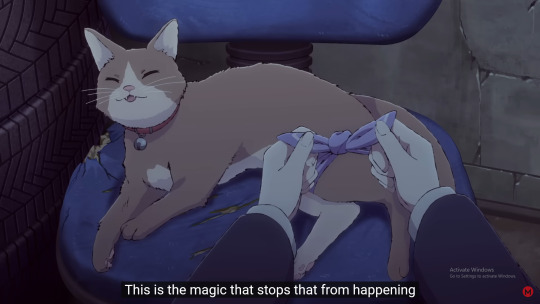
Amane tries her best to avoid upsetting the people in her cult so that she can minimize the risk of being hurt.
Not meaning to brag but I’m pretty happy I’ve made up my mind so they don’t make that face at me again
Amane wants a righteous excuse to Get Out of a harmful situation, because if she has no "righteous excuse" she'd be someone who is running from pain and, thus, by the rules of her cult, one of the worst evils there is.
The cat was both something incredibly painful and emotionally distressing, And a good excuse for her to escape her abuser. As most likely she broke one of the cult's rules. That being the one about destiny.
I don’t need it any more, if you’re going to break your vow Here and now, it’s my turn to tear you apart So there is no second time, I’ll give back the judgment that you gave to me
It's this that makes Milgram appealing to her. The concepts of righteous punishments and trials of pain that CAN be escaped without it directly violating her cult's doctrines. There's an ending, there's safety you can get if you were "good enough," these are things Not Present in her situation. There was No End to Amane's abuse until her mother killed the cat because Amane was Never ever going to be a good enough girl for her.
At least in here, there is an end.
(Anyway vote Amane Innocent!)
#milgram#amane momose#008#milgram amane#milgram meta#milgram analysis#bit messier than I'd like to be but I hope you guys like reading it anyway#cw child abuse#cw cults
53 notes
·
View notes
Text
I have been watching Pointy Hat's Gods video, because, yes, I greatly enjoy Pointy Hat's D&D video and clever ideas and subversions of tired RPG tropes...
youtube
And this encouraged me to finally do the post I meant to do since a very long time: talking about some of my favorite depictions of gods in fantasy works.
Well... "Talking" might be a too-broad word, because I don't want to analyze or explain everything, due to this entering full spoiler territory - I prefer to leave you the surprise to discover them by yourself...
But I want to list here specific fantasy works that involve gods in fascinating, clever ways that work so hard to make us feel what a god or goddess is, while also avoiding the Americanized, super-heroized way media has been showing us the gods for decades now. I also will NOT be talking of specific works adapting or subverting specific mythologies. I am not talking here about stuff like Percy Jackson, or God of War, or the Vei comic book... I will make one exception for Neil Gaiman's "mythology melting-pot" works, but only because they are more interested in what "divinity" and "deity" means than playing with specific myths. I am mostly focusing here on what you would call the "fantasy pantheons" and the fictional gods.
First and foremost being: The Chalion series by Lois McMaster Bujold

This is the first fantasy I ever read where the gods actually FELT like gods. Not only that, but there is a full exploration and analysis, interwoven with the plot, of many god "tropes" people complain about in the fantasy genre, questionssuch as "Why must the gods rely on a human clergy to do things if they are so powerful" or "If the gods know everything, why don't they prevent stuff happening in the first place?" or "Why isn't the god a deus ex machina solving everything?"
Honestly, the gods of Chalion are probably my number 1 representation of gods in fantasy novels.
Not quite "traditional fantasy" but of course, when dealing about the creation, exploration and subversion of gods, Neil Gaiman has to be brought up. More precisely two of his works, "sisters" so to speak: his Sandman comic book series, and his American Gods novel.
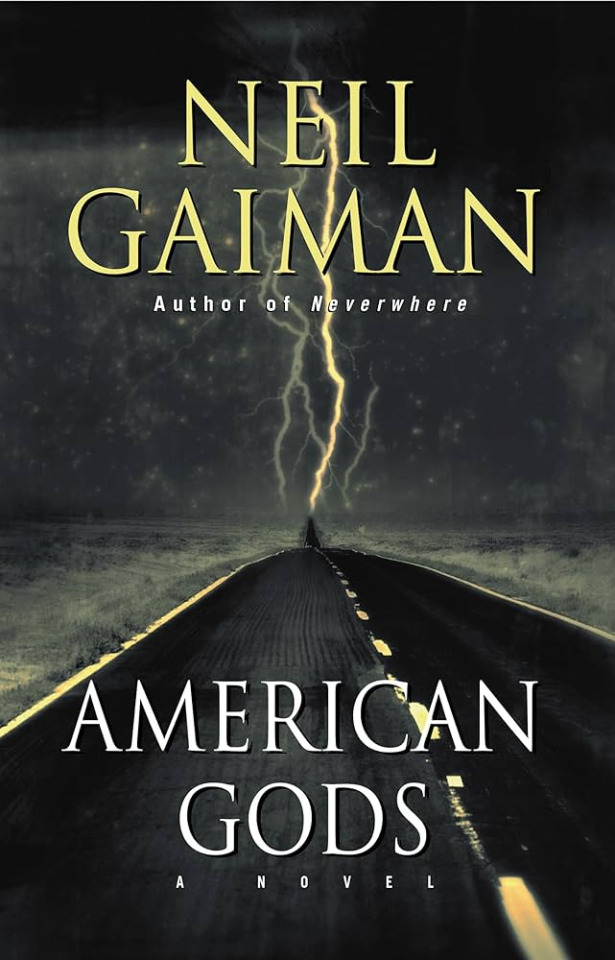
The Endless of the Sandman world are NOT gods, this is their whole point, they are ABOVE the gods... but they are still a marvelous and complex exploration of what it means to be the supernatural personification or embodiment of something - plus, the Three, of course. Sandman also introduces the topic that is fully investigated and played with in American Gods: the nature of divinity, what is a religion or a cult, the consequences and limits of faith, and the idea of vanishing gods, dying gods, and divine births... It is due to this deep thematic exploration that I decided to still include this novel, despite it mainly using beings from actual religions and folklores of the world.
If you want to keep the same motifs, themes and explorations present in Gaiman's work while diving into more traditional fantasy, you of course must go take a look at Terry Pratchett's Discworld.

Who needs to present this series today? The most hilarious fantasy parody ever, the peak of humoristic fantasy, and yet the most thorough deconstruction and reconstruction of all the cliches, archetypes, tropes and settings of the fantasy genre.
Religion and gods are a recurring thread across the Discworld. One specific sub-series (the entire series being organized in "cycles so to speak) deals with the existence and adventures of anthropormophic personifications: the "Death cycle", following the titular character of Death, the Grim Reaper. Specific books I could suggest are "Mort", the first book of the cycle, "Reaper Man", and "Hogfather", about a psychopathic assassin trying to murder Santa Claus, and the Reaper having to replace the jolly old man... However, if you are truly interested in gods, and Pratchett's exploration of myths and religions, there is an unescapable trio. "Pyramids", about the fantasy parody of Ancient Egypt ; "Small Gods", about how Discworld's version of Jesus came to be ; and "Monstrous Regiment", about women having to enlist as men in the army in a war-torn, hyper-religious country... These three books are very thorough observations, parodies and deconstructions of what a "god" is, of what a "religion" is, and how the relationship between faith, the acts of faith, and the object of the faith...
You also have several books which involve Discworld's pantheon of gods while not actually exploring religious themes - just parodies of archetypal myths and the traditional appearances of gods in fantasy books: the first two books of Discworld, "The Colour of Magic" and "The Light Fantastic" ; "Sourcery", about Discworld'd version of the Apocalypse, or the illustrated novel "The Last Hero".
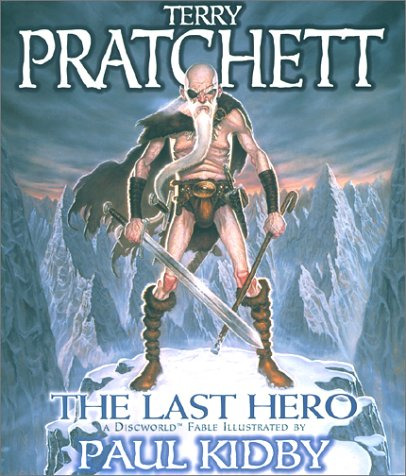
I said the first time I actually felt like I was reading about gods in fantasy was in the Chalion books - but there is another specific scene where the idea of divinity was perfectly conveyed. Now I can't speak about the whole series because I only read the first book: but the Fionavar Tapestry has some excellent godly depictions. Shout-out to the scene of the God encountering the Goddess - you'll know what I mean - it is an absolutely splendid thing.
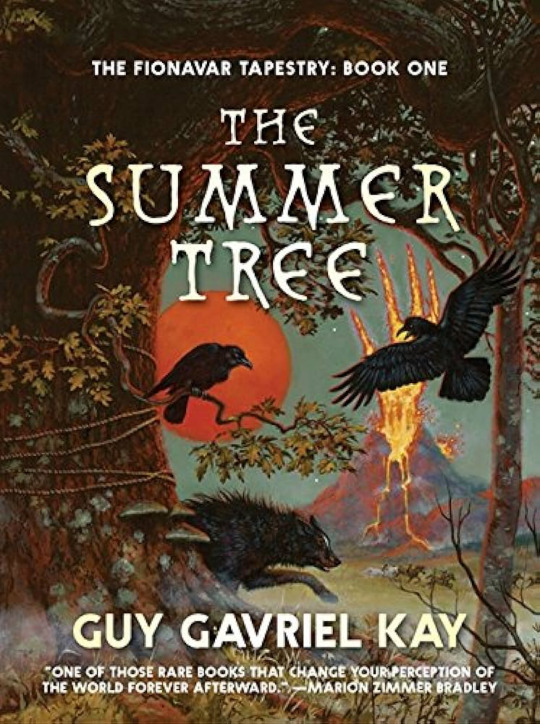
A little-shout too to Kingdoms of Thorn and Bone. It doesn't have "gods" in it... But it is the best and most accurate fantasy depiction I saw of "saints cult" and the whole way saints ACTUALLY worked in old European Catholic-Christianity. Even down to fantasy transpositions of the "folk-Christianity" which intermingles the saints with legendary figures and pagan deities. And while they are not gods, there are also some badass powerful supernatural entities/natural personifications that play delightfuly on old European myths. [It unfortunately is also ranking at the tops in the category of "Insanely promising series with most disappointing ending"]
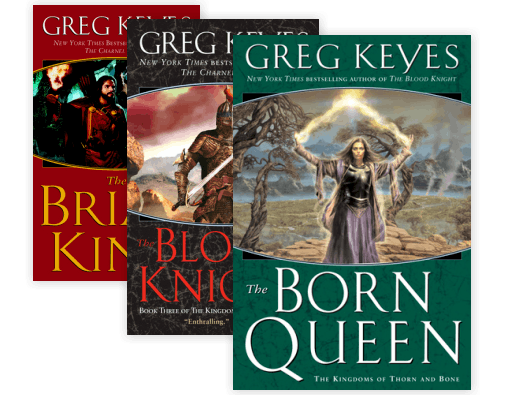
Shout-out, of course, to A Song of Ice and Fire - though Pointy Hat's video already covered it enough...
And to conclude, I will drop here not a fantasy book series, but a COMIC SERIES! Because yes, there are fantasy comics we should not forget about - one in particular I quite love being DIE.

(Oh yes and it was also adapted as a roleplayng game)
DIE was from the same creator as "The Wicked + The Divine", and you can summarize it as "A darker and edgier version of Jumanji, where the characters are taken to a fantasy RPG world instead of a jungle" - while also gleefully tearing apart at all the "portal fantasy" Narnia-style... The world of DIE is a great homage, deconstruction and "dark parody" of the tropes, conventions and archetypes of fantasy RPGs - while the plot explores the various roots and origins of the modern fantasy RPG universe (from Tolkien to Lovecraft passing by the Brontë sisters). And as such it does include a pantheon of gods, tied to its own version of a "cleric" (here rather a tamer and "debt collector" to the gods)...
Now, while some of the clever worldbuilding and inventions behind these gods is subtly conveyed throughout the actual comic, unfortunately (or fortunately if you like these things) to get the full extent of it all you need to read the interviews, articles and bonus content located at the end of each issue - but trust me, it is worth the read, because the pantheon of DIE was specifically designed to twist and subvert the cliche archetypes of gods in fantasy RPGs. From the god of nature, who is not a "flower-loving hippie" but a giant ferocious bear ; to the common "god of light and goodness" who turns out to be a sinister and sorrowful mourner crying forever over the world, passing by my favorite - Mistress Woe, the "goddess of luck", except that she embodies bad luck and misery and is the spirit of the "natural 1".
Oh yes, of course I also cannot forget to give a shout-out to the one who truly made the mythopoeia genre what it would be today: Lord Dunsany, who not only was one of the forefathers of fantasy well before Tolkien (and without which Tolkien wouldn't have written the works he created), but also created the famous The Gods of Pegana - who is still to this day a full pantheon and mythology completely fictional, but also free of use since it falls in the public domain...
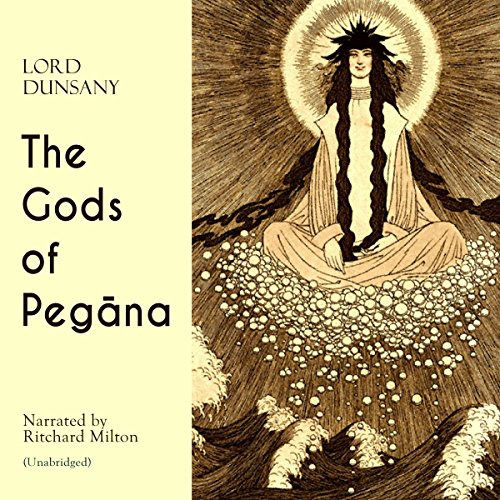
#fantasy#worldbuilding#fantasy gods#fictional pantheon#fantasy pantheon#fictional gods#gods#pantheons#mythologies#fantasy worldbuilding#fantasy works#fantasy books#fantasy series#fantasy tropes#fantasy references
9 notes
·
View notes
Text
Definition
This is a basic outline of my personal guidelines for what constitutes a Wiccan path/system. Others’ definitions certainly vary, and these criteria do not necessarily apply to non-Wiccan Pagans/Witches/other Occultists. Most of the concepts addressed here will be investigated more in depth with future posts.
🕯🌒🌕🌘🕯
🔮 Section A: Belief. It is my assertion that belief, first and foremost, makes the Wiccan. What one does is important to discerning Tradition (or absence thereof), but is secondary to the broader collective of Wiccan religious paths.
Reverence of Goddess AND God, together and equally. Wiccan worship and practice focus on a God and a Goddess, seeing them as manifestations of masculine and feminine divinity (among other equal, opposite, and complimentary pairs of forces and concepts. They are but one type of symbolic division).
Belief that the Gods can be directly contacted, whether through channeling, meditation, or other means. Also, It’s important to realize that one doesn’t need an intermediary, but will sometimes need a teacher or guide for the contact to be safe and successful.
Having a reciprocal relationship with the Gods. We give to Them, so They may give to us.
Belief in the effectiveness of Magick. Having confidence that your rituals and spells will work as they should is just as important as performing those works.
🕯🌒🌕🌘🕯
🔮 Section B: Practice. While I put belief first in my own determinations, there are certain applications of those beliefs that I see as essential to practicing Wicca.
God forms/names are European in origin, exceptions to this being Egypt and the Middle East. This is because I see Wicca as the continuation/revival of Pre-Christian Native European Shamanism, and contact with Egypt and Arabia (Mesopotamia, Babylon, Sumer, etc.) is well-established throughout history, and there is much cross-cultural influence between these groups. Also, there are mythological themes these regions have in common, that are not as present in, say, Asia and other parts of Africa. Additionally, many other Indigenous cultures and beliefs around the world are closed systems.
Celebrating the Sabbats with an understanding of their symbolism and story. There are eight Sabbats, or holidays, in the Wiccan calendar, also sometimes referred to as the Wheel of the Year. The dates given below are those traditionally observed in the Northern Hemisphere.
Casting a Circle wherein the ritual will be held. The Circle denotes sacred space for sacred acts, and is consecrated to the Gods.
General ritual format includes calling the Quarters, invoking and contacting the Gods, a section for the ritual purpose (celebrate the Sabbat or Esbat, work Magick, etc.), Cakes and Wine (including a libation to the Gods), and then banishing the Quarters at closing.
The Wiccan Rede and the Threefold Law are given some measure of importance. These ethical codes should not only advise on Magickal acts, but on the mundane actions of a Wiccan as well.
Sabbats:
🎃 Samhain – Oct. 31
🎄 Yule – on or about Dec. 21
🕯 Imbolc – Feb. 2
🥚 Eostar – on or about Mar. 21
❤ Beltane – May 1
☀️ Midsummer – on or about Jun. 21
🌾 Lammas – Aug. 1
🍁 Fall Equinox – on or about Sep. 21
🕯🌒🌕🌘🕯
🔮 Section C: Characteristics. These are descriptors, qualities that I feel are essential to the full knowledge and experience of Wicca.
Wicca is a fertility religion. Wiccans rejoice in and celebrate fertility in all its forms, sexual and otherwise (new growth, ideas, ventures, etc.).
Wicca is a nature religion. All of nature is seen as sacred and integral and interrelated. Humans are a part of nature, as are the Gods and the processes of Magick.
Wicca is an agricultural system. The Sabbats are aligned to the planting and harvest seasons, symbolically if not literally.
Wicca is a cyclical system. All the cycles of nature and the world are revered, including those of the Sun, Moon, Earth, planets/stars, seasons, and the life of all creatures, human and otherwise.
Wicca is a religion of balance. Just as life is a fact of existence, so is death. Just as Summer comes each year, so does Winter. Day and night, light and dark, each coin has a flip side, and all sides are important to Wiccan belief and practice.
Wicca is non-dualistic. Since each pairing listed above comes together to make something greater than the sum of its parts, the true nature of the reverence is for the whole, not simply the pieces. Wicca doesn’t view things as “either/or,” but “both/and.”
Wicca is a shamanic religion. A shaman is one who forms a personal relationship with the Gods and Spirits for the betterment of their tribe/family/people/etc., and has the ability to then travel the astral and communicate with the Gods and Spirits through various means, and also to provide healing. These goals are shared by Wicca, the skills to communicate, travel, and heal greatly encouraged and fostered by its teachings. Also integral to a shamanic system is the death-and-rebirth cycle, as shamanic initiations in tribal societies (which usually occur on the astral and are performed by Gods or Spirits) are said to involve being killed (often violently) and then reborn into a new knowledge and understanding. This symbolism is used in some Traditional Initiation ceremonies, but can be seen in all of Wicca in the God’s story as He traverses the Wheel of the Year.
Wicca is a priesthood. There are no lay people; even in ritual, it is important that everyone participate by lending their energy and intent to the rite at hand, even if the Priest/ess is the only one performing a physical action. Every Wiccan has the capacity to be a Priest/ess, and needs no intermediary between them and the Gods.
Wicca is an experiential religion. A lot of the theory and how-to and basic knowledge can be learned from books/websites, but to truly understand the fullness of the religion, one must actually practice it. There are also some aspects that simply cannot be learned or understood without actually going through them.
Wicca is a mystery religion. Those aspects that must be experienced are what I call the Greater Mysteries. The ways to achieve those Divine experiences are called the Lesser Mysteries. The Greater Mysteries are for all willing to seek them, the Lesser Mysteries are only Mysteries until one learns to properly perform and make use of them. In the case of Initiatory Oathbound Traditions, they are Mysteries to the uninitiated. In other words, the knowledge and experience you gain are Greater Mysteries, and the rituals and other acts that lead you to them are the Lesser Mysteries.
Next post: Categories
12 notes
·
View notes
Text
'Progressive' hindu nationalists - why are they Like That?
Tomorrow is the 26th of January, the 74th Republic Day in India - the day the Indian constitution was formalized and adopted. I thought i'd mourn my fast-fading nationalism on this occasion by kinda airing out some bullshit and starting a political longpost, which is always a good idea right? right???
Since about the end of last year, I've seen some blogs on here that define themselves around hindutva - hindu nationalism, the idea that India is a hindu nation and must abandon its secular status. Any leftie/liberal with any awareness of the news will know their rhetoric is bullshit. Anyone who isn't really aware of Indian religious dynamics would know to spot their Islamophobia from a mile away, because seriously, the discourse is Ben Shapiro levels of bad.
The most egregious of these include hindulivesmatter, rhysaka, yato-dharmasto-jaya, vindhyavasini and others. Basically a small hindu nationalist clique. They're actually not that big a deal even on this hellsite, but they keep annoyingly popping up to start firebrand arguments under posts. But they're not uncommon in the real world. In fact, i think the majority of the Indian urban youth is Like That - anti-homophobia, anti-misogyny, theoretically anti-islamophobia, the same general left-leaning values associated with Gen Z; but with a weird blind spot when it comes to the fascist decline of their own country.
These users are not too different from TERFs, with their couching of hate in progressive, tumblr-social-justice language. There's been a lot of discourse around why TERFs are the way they are, why their otherwise feminist and progressive values eventually shatter in favour of their hate. I want to do something similar for hindutva tumblr, because i see in it a newer kind of hindu nationalist aggression, yet one that i am very familiar with, as an urban upper-middle-class Indian born into a Marathi Hindu family.
The main question i want to answer is this: why does someone espousing dire Islamophobic rhetoric also sincerely believe in progressive ideas? Why do they not see the contradictions? To do that, we need a little primer in post-independence Indian history.
So, it's often said that Indian democracy was not handed to us; this is not only in the sense that we had to fight for our freedom against the Brits, but also in the sense that there were long deliberations on the exact type of republic we wanted to be. The constitution was drafted, finalized and adopted a full three years after the Brits left. This framing of a philosophical struggle stayed on, throughout the tumult of the following decades.
This is how the modern Indian is taught about our history: Several riots, the Emergency in the 70s, the wars with Pakistan and China, the formation of Bangladesh, the victory at the cricket world cup, the Cold War international policy of non-alignment, the Green Revolution, all of these are presented through a frame of struggle, with the Kargil War and the 1991 liberalization being the point of stabilization. The median citizen of 1971 was politically aware and politically involved. That of 2001 was most likely not. At least, that's the narrative of capitalism in the country. This narrative of a 50-year prolonged post-independence struggle is why Indian nationalism is so potent, even outside of the newer Hindu fascist rhetoric. We've got a very intense sense of national pride. I'm guilty of it myself.
In 1991, the economy was opened up to multinational corporations and eventually led to the formation of an Indian petit bourgeois. The period from 1991 to roughly 2011 is seen as a period of idyllic peace much like the Clinton administration in the US. Culturally, this was the time of the Bollywood masala movie - light, apolitical and all about a big Hindu joint family that preaches benevolent unity of all religions. But the thing that was never mentioned in these movies was caste - an elephant in the room that i haven't addressed yet. Just like the 'default' US Culture is white suburban christian, the default culture here is upper caste middle-class hindu. The aforementioned rise of the middle class was largely along caste lines. Households in the US have microcultures along ethnic lines, and they can be similarly mapped in India through caste and religion.
The Indian equivalent of the megachurch pastor is the ruling BJP's paramilitary parent organization, the RSS, as well as others like the Vishwa Hindu Parishad, the Karni Sena, etc - organizations that normal people largely didn't agree with but whose values and morals were ingrained in their subconscious. The apolitical Hindu in like 2004 did not believe, like the RSS does, that India should be a Hindu nation; but he (i use 'he' here because male tends to be default in this case, and that's a whole different conversation) did believe in the greatness of traditions, the Indian armed forces and in ancient Hindu scientific supremacy (which at the time was limited to Aryabhatta's zero and the actual progress in the sciences from ancients like Charaka and Sushruta to more modern ones like Ramanujan and CV Raman - it hadn't gone into cuckoo fantasy land yet, where we showhow had stem cell research and aeroplanes in ancient India and the Ramayana is apparently actual history now). To this person, Savarkar was an icon of the freedom struggle along with others like Gandhi, Bose, Ambedkar, etc, but he didn't know or care about his religio-fascist ideology. Fascist elements existed then and had their pockets of support - the Shiv Sena in Maharashtra, Modi's CM-hood in Gujarat, and the first BJP national administration came up during this time. To the normal citizen, they were simply extremists with 'some good points'.
2008 was the year of the 26/11 attacks in Mumbai. Islamophobia didn't fully enter Indian discourse just yet, largely because of the assertion of the city's multicultural identity, but the seeds were certainly sown. In fact, blatant Islamophobia wouldn't be mainstream till 2016 or so - the BJP's 2014 election was won on middle-class concerns. The petit bourgeois finally made its voice heard politically in the 2011 anti-corruption protests spearheaded by Anna Hazare and Arvind Kejriwal, the latter of whom is the founder of the newest major political party in the country. It's typical of protests of this kind, agitating against a vague idea of corruption with not many tangible demands. It is true that by 2011, the Congress government was notoriously bloated, corrupt and ineffectual at a systemic level. The BJP gained a single-party majority on an anti-corruption and pro-welfare platform, with religion not really a factor.
The middle class celebrated this as an ultimate affirmation of their hegemony, and the RSS-derived values kicked into high gear. The celebrations have now become a gloat-fest, kinda like vindicated Marvel fans when their Disney product makes a bajillion dollars. The best example of this is the Ram Mandir inauguration earlier this week. Modi cultivated an image of a messiah figure who could do no wrong. Anyone who opposed their goals is now an anti-national and a traitor. General attitudes as a whole have grown a lot more bloodthirsty and carceral. Propaganda, degradation of public discourse, weakening of the media and public institutions, the whole gamut.
The people running the above-mentioned blogs are quite representative of this demographic. They probably fully believe what they spout. They fully believe that Hindus and Hinduism are under threat in India, that love jihad ("forced conversion") is a real thing, that Islamists are taking over their nation, and even that Hindus have been 'sleeping' and are just now being 'woken up'. At the same time, they believe in socially progressive values. The supposedly pro-LGBT+ and pro-feminist stances taken by the RSS are very much targeted at urban Hindus, not at the West as PR.
The propaganda directed at them (which includes movies, social media and tragically, many news outlets) often appeals to the traditional acceptance of queer individuals in mythological texts to get straight, cis, sheltered urban Hindus of all ages to reconcile bigotries and get on board the hate train. It is often in a comparative frame, juxtaposed with the bigotry in Islamic or Christian texts and historical persecution in the West (btw, the term acceptance is very loose here, they often equate mention of a thing with acceptance of that thing even if it's derogatory. Ancient hindu culture only 'accepted' trans women, and that was a marginalized acceptance at best).
The RSS often preaches that Hinduism is the religion of tolerance, and advocates for a twisted version of the tolerance paradox. It's reached a level where propaganda doesn't have to be deliberate - the citizens will do it for them. These blogs are true believers despite the contradictions, but their online activity is probably a deliberate form of praxis, with the co-opting of social justice vocab and appealing to white/western/Indian expat guilt etc. So yes, very much like TERFs, except that TERFs are an actual minority whereas Hindutva ideology is increasingly the default 'apolitical' belief. The reactionary internalization has been successful.
Tl;dr: people like hindulivesmatter are sincere in their bigotry towards Muslims as well as their progressive beliefs, because Indian culture as a whole oriented itself towards appealing to the urban upper caste middle class.
#india#hindutva#religious jingoism in india#islamophobia#hindu nationalism#fascism#grumbles rambles and rants#this was partly written as a way to occupy myself while avoiding family during the temple inauguration#cause everyone turned into bigoted zealots#sorry for the overlong tangents and parentheses
14 notes
·
View notes
Text
Introductions!
Hey everyone! I'm gonna pin this for any new followers to get an idea of the kind of person I am and the thing I'm writing. Always happy to respond, feel free to message!! :)
In the following sections, I've boldened the most important aspects, if you really want just a lightning-quick summary, but otherwise I have, as is my usual fashion, yapped.
Enjoy the read!
The Author:
Hi! I'm Eliot. I'm a student of English Literature and for years I've been DMing and writing fantasy novels. I thought I'd make this blog as a sort of public diary to record progress on my current novel as it's the largest piece of work I have ever done to date. Part of my degree focusses a lot on Mediaeval Romances, Arthurian Legend and Old English Epics as well as Graeco-Roman Classics and I wanted somewhere to channel that fascination into my very own world of myth and legend. I'm always on the lookout for more writer friends so if you want to, why not introduce yourself in the comments (or PMs if you're feeling shy!)
The World of Waystone:
It is a high fantasy set in a world largely inspired by the 19th Century, drawing ideas from all sorts: from the French Revolution to the British Empire, from the Industrial Revolution to the Romantics, from Victorian England to Edo Period Japan. I've taken a lot of inspiration from folklore, history and religion from around the world as well as throughout history. I've not conscribed myself to one century or continent, but instead pick and choose across the multitudes of human history whichever I think the most fascinating to explore. That being said, I always will be a sucker for the 1800s. This world is, to me, an ever-expanding, constantly shifting, indefinable shape which I learn more about every time I sit down to write. This current project is not the only time I have used the world and it has been in conception for over a year but anything outside of this narrative has been small D&D campaigns (one-shots) or the odd short story. I have wanted to create a longer work set in Waystone for a while. That is, until I began to write this.
This novel takes place in the continent of Bantiel in the late 9th Millennium. The continent is split in two by a great mountain range in the middle named The World Spine and is home to the mystical Forest of Secrets where the Fae are said to reside. One of the most important details for me is that the political boundaries/kingdoms are not defined by race/species nor do the races have their own respective religions. Though, of course, each race has its own creation story and each nation has its own religious practices. I have come up with reams of mythology and history but, for the most part, I try to treat the world outside of the story as though it already exists because, to the characters, it does. It is a world where Gods are present and this presence has, for millennia, changed and interfered with the lives of mortals. It has been almost 9,000 years since the wars between the Gods that shook the earth and the mortals have grown complacent with their own power. Many wars have broken out between nations; many factions beyond those defined by borders have sprung up.
With this being my longest work set in Waystone, as well as one I feel comfortable sharing to a much wider audience (as D&D campaigns have only been between me and my friends), I will treat it as the first instalment of the World of Waystone. The novel requires no previous knowledge, not even this blog! It is still in the works, but when I publish it it won't assume any prior understanding. I just hope this blog can get other people excited about the world too! :)
Concept:
Originally, I intended to write a sort of Slice of Life story where the perspective hops from person to person, city to city, country to country and weaves this interlinked narrative of all of the small insignificant events that build to make a full, entire world. I wanted something that let me go to all the stretches of the world and to see all of these varying lives and to explore different types of societies, different types of people, different landscapes and different 'normals'. But, the more I thought about it, the more I leaned more towards exploring Waystone on a much more down-to-earth level. It needed characters, it needed life, it needed personal input and something not 'Slice of Life' at all, something completely opposite of ordinary. It needed something Extraordinary, to bring out the ordinary. Something atypical to serve as a reference point to explore all of the differences across the world. And instead of the perspective hopping to different characters all across Waystone, the characters themselves would make that journey.
However, to have a narrative that ranges across the world means that I need characters from all across the world. And so, thus began my planning process. The main cast of the novel is comprised of five people from all across the world, each with their own lives and problems, each with their own aims. The more effort I put into these characters, the more involved I felt with them and the more I understood about my world. This way, I can explore a different aspect with each of their backstories, taking the perspective all across the world just how I wanted, whilst, at the same time, having a group to interact with one another, to have intertwined and complicated relationships and to look into the daily lives of.
The more I planned this story, the more I found myself insanely inspired. And, because of this, I have been churning out a ridiculous amount of content. It's lucky, then, that the story's arc is an ambitious one; though, to begin to give an idea of what I mean, I must explain something else.
The Structure:
Every piece of work up until this one, I have always ended up with relatively short narrative arcs. This is a habit I really wanted to kick and so, upon starting this work, I devised a new creative method for myself and can now confidently say it works. Rather than having a single arc from start to finish, even with intermediary smaller arcs or parallel arcs (ie. sub-plots), I instead divided the main narrative into many smaller arcs. This episodic structure meant that I could, instead of having one main climactic scene, or one main denouement, have many climaxes, many resolutions and the story would continue on. It's almost like the structure of a television series. Yet, to make sure I write a substantial amount for each 'Episode,' these Parts are divided themselves into chapters.
When I publish this, I aim to post it online and for it to be a continuous web novel with something like weekly chapters. Each Part is named so it would, for example, look like this:
Let the Reign Fall: IV
With the Part's number only being next to the first chapter of each and the title being before every chapter number(And yes, that is the title for Part One).
There is no end in sight, but that does not mean the plot won't have larger arcs or resolutions, but when one line ends I will always make sure to open another one. I love these characters too much to just stop at any point and the world is so vast I have so much to explore.
When I have written enough, so much that I feel I have a fairly substantial backlog, I will begin posting weekly chapters. Don't worry, I'll keep up with updates here so you know exactly how far along it's coming!!
The Characters:
These are only the main characters, but are by no means the only important characters in the story. What with each of their own histories, families and previous relationships alongside encounters they make along their journey, from new friends to fearful enemies to everything in between, the world soon becomes a vast place. Though there are more than five, this is because the central cast changes over the course of the story (I promise it isn't just that I can't count). In future updates I will post more character intros!
Ren: A drow who escaped his war-torn life in the cities under the surface. A mysterious wanderer, he is clearly hiding something. Under his favourite black-and-red cloak, he always holds a weapon close. In his dreams he sees the future and not once have they failed to come true. With harrowing visions of the future, he searches for a new life in the nation of Cerulea - or just about anywhere that isn't home. However, he struggles to let go of the past and with his sense of self. Despite his cold exterior, he is very sentimental.
Prince Alastair: The Prince of Cerulea. A highly educated, elitist and over-proud young man. He is the heartthrob of the nation and, naturally, has an ego. An elf of over two hundred years old, soon he must inherit the title of King and has, for years, been trained as a diplomat. Yet, he isn't loved by everyone and many want him dead, whether it's because of his arrogance or his sadistic streak. Because of the strain of public life, he has become somewhat detached from emotions.
Maia: A Fae from deep within the Forest of Secrets, beyond the borders to Waystone and deep into the Kingdoms of the Spiritworld. She is the Princess of the Seelie Court. With her best friend, she ran away from her own wedding and doesn't even know of the existence of other elves, other Fae people, beyond the Forest. Erratic and energetic, she proudly carries her magic staff with her wherever she goes, even despite sorcery being forbidden. A master of the arcane arts, she has a particular interest in illusory magic which makes her difficult to understand and difficult to believe what one sees about her...
Diavol: On the run for serial murder charges, this elusive and over-confident criminal is perpetually a source of poignancy for Ren, ever since he left him all alone twenty years ago. He is a stickler for the city scene and a reputed womaniser. Self-taught in the ways of sorcery, oftentimes he resorts to dirty tricks and 'cheap shots' with his quick-casting, underhanded spells. Yet, on top of this, a secret that none other than Ren knows, he has the ability to read minds, and uses this to his advantage to evade arrest and flirt with strangers.
Asphodella: A strange loner, dressed like a noblewoman from thousands of years ago, she visibly stands out in a crowd. Rude and self-assured, she does not let anyone tell her what to do. She has mastered the art of shapeshifting and at times can let her bestial, violent nature out. Bloodthirsty, fierce and independent, though at times a softer, more sympathetic side comes out. Her heart holds a dark past.
Illuvi: An exorcist from the rural countryside of Narika. Renowned for his bad temper and vulgar language, many people are scared off by his aggressive nature. However, he is now being chased by the Spirit Hunters for failing to exorcise a spirit. He felt pity for it, only young, as it took the form of a child and he could not bring himself to kill it. Now, she calls him her older brother and the two of them live by themselves off of the land, running from place to place and sleeping outside. He uses himself to channel elemental magic and controls flames at the expense of his body.
Akari: The spirit that Illuvi could not kill. Takes the form of a young girl and is (mostly) tame. Shy, softly spoken and naturally skittish, this kitsune practically clings to her older brother wherever they go. Afraid of what humans will do to her, the only person she trusts is Illuvi. Wields magical power beyond human comprehension but, being a young spirit, her inexperience means that she does not know how to control it. Oftentimes changes into fox form and hides up trees.
The Plot:
With a story that spans across a whole world, with characters that, too, span across a whole world, one of the more difficult things I have struggled with when creating this story is how they meet each other. However, there is one thing that they all have in common: they have all run away from something in their past.
As they each search for something, whether that's a new life, a new love, a safe place, a home or somewhere free from the law, they find each other and, consequently, get tangled up in each other's lives. They're tied into a grand conspiracy to destroy the monarchy, involved in the escape from pursuers and left with no one to turn to but each other.
If you want to know more, I'm going to post a synopsis/blurb thing later so look out for that!
Closing Thoughts:
Anyway, thank you for reading this far. I hope this gives you a better idea of what this project exactly is. I know this intro is long but that's because I actually have already written a fair amount and there is a lot of content, and many creative decisions, to summarise. I'm going to keep adding to my blog with updates on the writing process. Follow for more, I've always got a lot to say about this, and have a nice day!!
#novel writing#fantasy novel#creative writing#writing#writers on tumblr#writeblr#writer things#creative inspiration#writer#fantasy#current wip#on writing#creative process
6 notes
·
View notes
Text
If you've followed my blog for long enough, you might have noticed a running joke I occasionally dredge up, where I write "KIM WEXLER DOESN'T SING" in all caps.
First of all, this is kind of intended as a nod to how few concrete personality traits Kim has; how much of what she says and does in the early seasons is contradicted by her actions in later seasons, and just trying to find any through line with her charicterization.
But specifically, this is a reference to a scene from S4E10 "Winner", where Kim refuses to sing "Bohemian Rhapsody" karaoke with Jimmy (the song choice itself, seems worth studying). Jimmy has a terrible singing voice, but he doesn't allow any degree of self-consciousness to stop him from performing on stage. He belts his heart out, both in "Winner" and again later in S6E11 "Breaking Bad", seemingly to deliberately spite Kim on the latter occasion. And this relates to other ways in which Jimmy is much more comfortable showing vulnerability than Kim is; Jimmy cries much more readily than she does as well.
So with all that in mind, it might seem odd that I have Kim singing in her very first scene in "Slippin Kimmy". Here's the catch! Kim is alone in her car while doing this. Kim's aversion is to being perceived as weak or frivolous in public, and she still is shown to be reluctant to express herself so freely around other people.
Because of this, the Church Playhouse becomes an important motif over the course of Season 1. The antagonist of the season, Pastor Dawson, accumulates soft political power by finding people who are frustrated and disillusioned and helping them to reach their full potential, theoretically gaining their loyalty in return. Musical theater has been a powerful tool in this therapy (as well as communicating the religion's message), but Kim is resistant to this treatment. Because of this, song is always only on the periphery of the story; plays will take place off-screen, but Kim is never present for them; important scenes will take place with Kim happening to stand on the stage, but an audience is never present.
The overarching idea being that there are whole worlds of freedom and beauty Kim is able to participate in at any time, if only she will overcome fear/paralysis and perform the small bit-part she has in a grander story. A not-very-subtle metaphor for the criminal world and life in general. And Dawson might have had ulterior motives, but by trying to push Kim out of the shadows and into the spotlight, in his mind he was genuinely helping her. Because when all the world's a stage, stage-fright isn't just a matter of preference; standing idly by instead of taking on responsibility is a moral failing. Eventually Kim is forced to take on responsibility. In S1E7, she's dragged into a protracted ethical debate with a former member of the theater troupe, and in S1E8, she's taken Dawson's place in the pulpit, and must be willing to show vulnerability in order to deescalate a crisis.
So even if we never actually see Kim sing in public, she does end up performing for a crowd. She does, slowly but surely, become comfortable showing her true colors.
2 notes
·
View notes
Note
What are some ideas, elements of your worldbuilding, or plots you'd like to explore in rp, but haven't yet had a chance to?
Ooh, that's difficult. I'm pretty good at asking for what I want. That said, I have a very strong love for the idea of characters exploring K'war and experiencing it, whether as a kei or as something else, and while I have started some plots, threads, even tabletop games on the subject, I unfortunately have yet to get far with any. I like being the 'gm', if that makes sense, even if it's not actually a tabletop game, I love getting to work my worldbuilding and character building brain as hard as I can to pave the way for the other to explore freely and experience new things and have fun! It scratches the same itch as these world and character building asks I requested for my birthday. So, I suppose that's a sort of vague plot tendency I crave!
For specific worldbuilding aspects, I'd really love to dig into Midlands Kei religion and festivals. Midlands Kei refers to a wide set of technically-Imperials not as an empire but as a race/ethnicity without the actual imperialism and religious warfare that wrecked a lot of their culture. They are a race within the Imperial subspecies including the grasslands, southern mountains, and the capitol. Their cultural inspirations include a lot of Europe, not English, but Ukrainian, Irish, Welsh, even Armenian, and they worship deities of the wind primarily, but have a healthy admiration and following for all deities depending on the individual, Imperial and Sea faiths alike. They have more greenish skin tones, like Skrap.
In ancient times, they were actually more prominent than the reddish, sun-worshipping Imperials you think of now, due to their wider area of origin rather than the Imperials originally coming from a smaller, concentrated area, though Midlands kei population was always more sparse with small villages over a wide area, rather than densely populated cities like the Imperials. The Southern Imperials rose up and claimed the Midlands Kei as part of their culture, erased quite a bit, and then began slowly eradicating them over generations via eugenics ranging from subtle beauty standards to outright government action. That said, Midland Kei do persist and are present over a wide area even if in fewer numbers, and some of their bloodline have even made it into the royals. Many especially wealthy Imperials, especially royals, will act as if the Midlanders are fully gone and no longer exist/have fully integrated into the Imperials, a thing of the past. That is patently false, but they just kind of ignore it because it's inconvenient to their supremacy. They are the same subspecies, hence my calling them technically Imperial as that is the term for the land dwelling subspecies. That might change.
I have always had the Midlands kei exist as a history for the Imperials, but have only recently made a distinction between them and the Imperials, as originally I had the two sort of combined, but as my lore expanded, this no longer made sense. You may see mentions of Midland kei as Plains kei, or see me mention an Imperial has Plains ancestry, this is the same, as the Midland is full of, among other things, wide rolling plains and grassland hills.
If this was weirdly worded especially in the second paragraph it is because it is 6 am
3 notes
·
View notes
Text
A Somewhat Condensed Timeline of Aristasia.
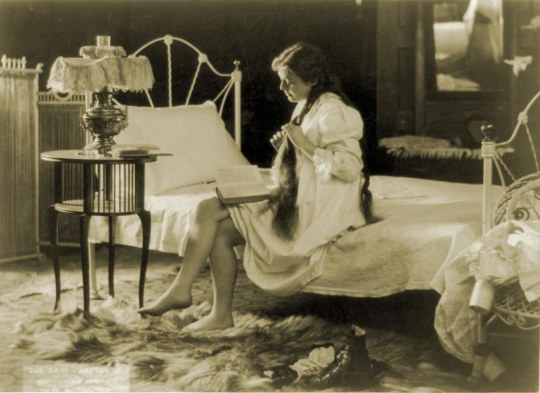
Aristasia is sometimes very difficult to grasp, because there are many parts in motion, and it's been many different things, either at the same time or in different eras. In Aristasian lore, time and space are one. Western Aristasia butts up against our reality, and the further east you walk, the further back in time you go.
The sun rises in the East. The early-to-mid 1970s is where it began with a group of girls in their twenties who were deeply into the idea that the earth had an ancient, secret, matriarchal history and that God was a woman. Several different groups with this same belief got together to publish a magazine that explored these beliefs, writing as if they were part of an ancient and secret matriarchal society. There were scriptures, songs, holidays, and personal histories being presented in this magazine as an attempt to legitimize their belief.
By the early 80's some of these people had formed something of a hippie commune in Ireland, and attempted to live what they had preached in their magazines for the better part of a decade. These were called the Rhennish. They were a little bit like Amish hippies, rejecting modernity and living spiritually. Their spiritual beliefs were referred to as Lux Madriana.
Only a couple of years later, by the mid 1980s, the men had been kicked out of the club and the aesthetics had turned very Victorian. In this era they still claimed to exist without electricity, but they also published a number of text-based adventure games for computers. This was the St. Brides era. This was the name of their publishing company, as well the name of their "school" that ran week long events. It was a bit like a role-playing game or a LARP. Women would pay about £ 120 to spend the week reliving their school days for fun. The inhabitants of the St. Brides School called themselves the Silver Sisterhood.
The late 1980s saw an Aristasian off-shoot that included men called "Romantia". They held similar anti-modern values to the Aristasians. They produced some newsletters and zines about their world view and perhaps hosted events. Aesthetic wise, they tended to drift further into the 20th century than the Silver Sisterhood's pseudo-Victorian role-play. The groundworks for what would later become familiar in Aristasia were laid here, but they referred to themselves as "Olympians" when they didn't call themselves "Romantics". What would later be known as "The Pit" or "The Void" was known as "Babylon".
The early 1990s saw the end of the St. Brides School. They seemed to have had some disagreements with the landlords, stopped paying rent, and then left one day, leaving a lot of their stuff behind. The early 1990s also saw an assault charge against the woman who would become Miss Martindale, for some whipping her live-in-maid, who was acting as a maid in order to learn about the female-divine religion that they popularized in the mid-70s and still seemed to practice behind closed doors. Newspaper articles came out about some very problematic materials found in the house, including correspondence with National Party members and anti-semitic publications, as well as BDSM pornography, catalogs, and equipment. They largely denied this had anything to do with the Sisterhood, and insisted it was junk mail sent by perverts and things their boarders brought into the house without them knowing.
Things were quiet for about a year, until the girls came back in full force in the mid 1990s. This was Aristasia's first big day in the sun and the height of the Wildfire Club, their lesbian publishing company that leant heavily into BDSM and master and servant relationships. A large portion of their most well known books were published in this era, which were largely erotic stories interspersed with Aristasian lore. There was a lot of push and pull between releasing racy material, calling attention to it, and then insisting it has nothing to do with sex. I believe this was the first time they called what they did "Aristasia". Aesthetics in this era largely shied away from the Victorian and focused more on the glamourous 30s-50s. There was a big focus on vintage stockings. Aristasians began setting up early websites in this era. The infamous "A Weekend with Miss Martindale" was aired on late night BBC.
This era kept on rolling into the late 90s throughout the early 2000s, with Aristasian nights at local lesbian bars, as well as fetish clubs. They sold fetish supplies, vintage clothing, vintage style stockings, as well as their own books and other fetish books. This was the height of Aristasia-in-Telluria, with several households of Aristasians living together as Embassies. Girls could schedule appointments online to meet with Aristasians to see if they were a good fit for their world. The woman who was known as Miss Martindale was something of a celebrity and had gained international renown for the brief BBC documentary about her from 1996, although she had perhaps moved to America in the late 90s.
The mid-2000s put a screeching halt to Aristasia-in-Telluria and their embassy was moved almost entirely online. The girls gradually seemed to move away from real-world events, and perhaps each other, and they moved their Aristasian adventures to forums, chat rooms, and the Second Life game, where they set up their Aristasia-in-Elektraspace. Operation Bridgehead was announced in late 2005, which seemed to make a very big statement about Aristasia: It was a real place, Aristasians are aliens from that planet, and all that spanking stuff was just a big misunderstanding and not that serious at all. This is the era of Aristasia Pura. The game got very serious: the religious parts came back out in the open, the world building got elaborate, more websites popped up, and more girls started showing up to play in their sandbox. A mysterious girl known as The Mushroom Princess was the Aristasian welcome committee on Second Life and seemed to play a big part in charming new girls and directing the game. The mysterious Mushroom Princess was, in fact, one of the girls who played a major part in creating the religion that was the underlying belief that linked all of these eras together.
The mid-2000s also saw the Miss Martindale BBC documentary go online, being uploaded to early Youtube, seeming to attracting a mixed group of people to Aristasia. Some people saw it as an intense group of friends where they could create a fantasy world together online, complete with a built-in spirituality, and others were seeing the racy 1990s erotic and stylish club of ladies in vintage clothes aggressively rebelling against modernity with their femininity. Something of a fanclub for Miss Martindale popped up online, completely separate from the true Aristasians, with a big emphasis on their Romantia and Wildfire Club days. Small Romantia revival meetups pop up in the UK after people online, particularly men, discover the old Aristasia and want to experience it for themselves. The old Romantia magazines are put online. These new groups were completely unaffiliated with Aristasia.
Things chugged on, more or less the same, through the late-2000s with the Aristasians-in-Elektraspace becoming more and more interested in Anime and learning Japanese language. The fall of Second Life perhaps shrank their numbers, because in this era they seemed to put out a lot of sites attempting to entice people into their belief system, without outright calling it Aristasia. You see them making "femmekin" blogs to attract otherkins, multiple Filinist/Deanist religious blogs, several sites about Amazon warriors, and other "all girl world" websites.
Things start to get rocky in the early 2010s. The last remaining true UK Aristasians, who seemed to have receded completely into elektraspace at that point, sell their vintage school girl supplies on Ebay to fund a move to America. Anime and Japan becomes more and more important to every conversation they have. Their aesthetics change to the kawaii. Discussions in the forums often take place in Japanese. However, despite this, they start Sun Daughter Press, and publish two fiction sci-fi adventures that seem to harken back to an the early days of Aristasia Pura.
In 2013 the boat is thoroughly rocked, the seas are stormy. Old-style Aristasians, and the Miss Martindale fan club, are sick of talking about anime and kawaii things, they have noticed the gradual change and don't understand why the game has changed so drastically. They miss the old Aristasia and notice the name of their homeworld is hardly ever mentioned any more and their old ways are downplayed or utterly erased. Critical blog posts are made. "Turncoat" and "traitor" accusations are made. There's evidence an Operation Bridgehead Version 2 was in the works. The old URLs that were allowed to lapse were bought by Aristasian purists, perhaps the people that had come in from the mid-2000s, who were looking back to the 1990s. All their old archived sites were put back online to preserve the old ways. Even the near-pornographic sites that were associated with the 1990s Aristasian empire are back in the Aristaisa Preservation Project. Almost immediately after the APP goes online, Aristasia changes its name to Chelouranya. Operation Bridgehead Version 2 is, presumably, cancelled. The old Aristasia is dead, and is claimed it never really existed, Chelouranya reigns supreme. Those who have been shut out of the new Aristasia suggest starting "Nova Aristasia" to revive the old ways, but it never comes to pass.
Chelouranya is quiet throughout the mid-to-late 2010s. It's a small group of girls who are devoted to Japan. Or rather, to the Aristasian version of Japan. They learn Japanese, The Mushroom Princess visits Japan and has something of a religious awakening where she realizes that Japan is as close to their lost Motherland of Aristasia as they're ever going to get, they speak in Japanese. They start teaching Japanese to outlanders and it's surprisingly successful. The early proto-Vtuber Cure Dolly is created for this purpose and controlled by The Mushroom Princess. She has a successful patreon. If any more Aristasian world-building happens, it's done privately. The woman formerly known as Miss Martindale lives in America, her husband (for that's why she left for America) dies in the mid-2010s, she dabbles in hosting non-Aristasian spiritual retreats in California, she does some art, hosts some plays. Meanwhile the mysterious mushroom-shaped figure who brought anime into Aristasia continues teaching outlanders to speak Japanese and the former Miss Martindale helps her out, and perhaps even lends her her home. In the late 2010s and early 2020 there is a bit of a revival of the Filianic beliefs, with several independent Filianists, some of which used to be involved in the offshoots in the 1980s. Through some intense research they make all of the old 1970s religious works available online, release their own version of the scriptures, and untangle the complicated web of the authorship of the early Filianic works.
In late 2021, the Cure Dolly Patreon made a vague announcement implying that the little Mushroom alien controlling Cure Dolly has died. There is some debate amongst her online patreons, who have probably never heard of Aristasia and couldn't tell a Blonde from a Brunette, whether or not she has really died. Shortly after this the woman who was once Miss Martindale hosts a meetup called "Wonder Woman's Island Society Recreated", with an emphasis on the ancient knowledge of the Amazons. The sun has set in the West, and is rising in the East again, but Aristasia very well may be empty of loyal subjects.
#aristasia#aristasian#miss martindale#chelouranya#st. bride's school#children of the void#aristasia.com#blondes and brunettes#blonde and brunette#cure dolly
18 notes
·
View notes